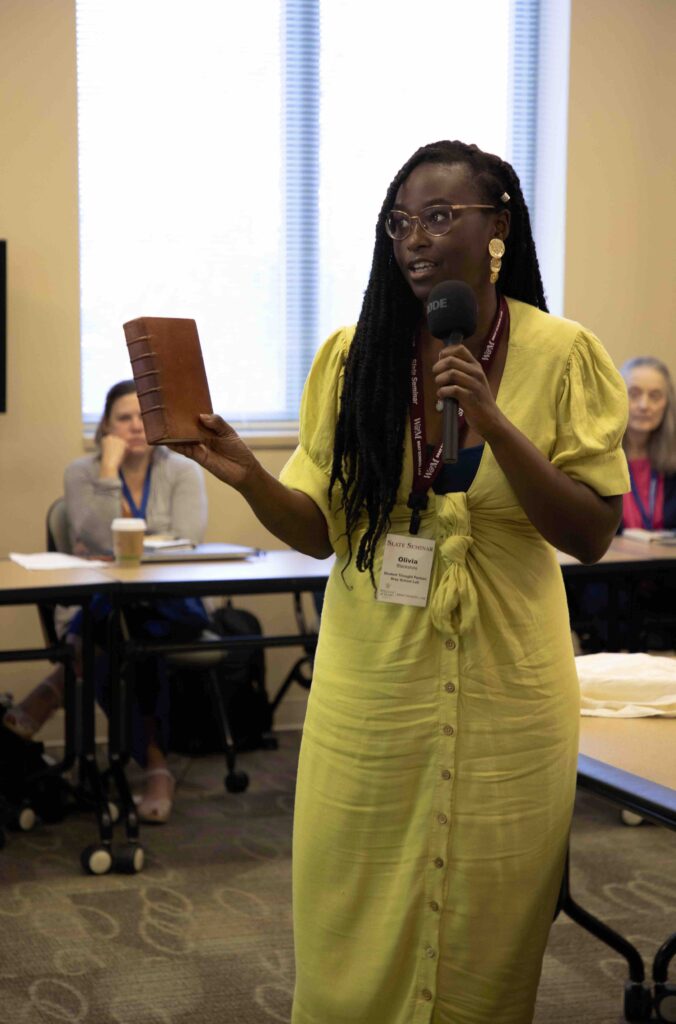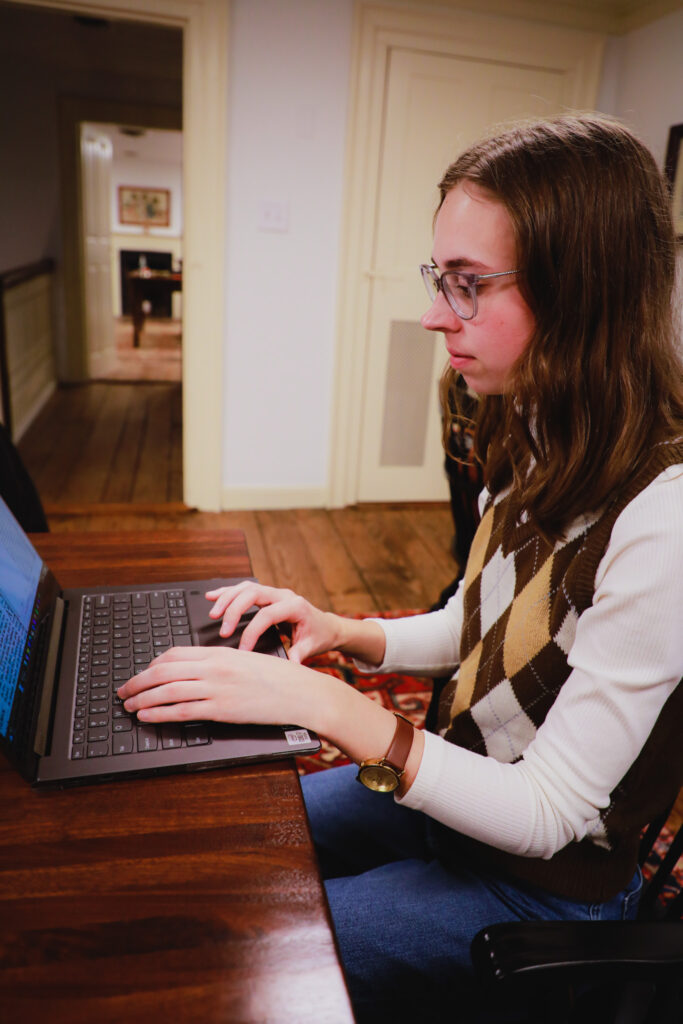By Elizabeth Drembus
Aggy, Molly, John Ashby, Isaac Bee. When I first read their names and the names of 82 other students who attended the Williamsburg Bray School, I was struck that their names had been recorded at all.
As the genealogist for the William & Mary Bray School Lab, I research the genealogical lines of all known Williamsburg Bray School students along with my colleagues. Genealogy is the study of families, family history, and the tracing of their lineages. At a time when there are concerted efforts to minimize and deny the history and legacies of people of African descent, genealogical research is emerging as a tool for reconciliation. Our project is one of many in progress in the U.S., taking place ahead of the nation’s 250th anniversary. The National Archives recently announced their efforts underway to digitize tens of millions of historical records, previously unavailable online. The Bray School Lab is in good company as we rediscover the students’ stories and recognize and share their contributions to our developing nation to tell a more expansive story of early America.
Traditional and Reverse Genealogy
Genealogists traditionally start with the present and work toward the past, with oral history and genealogy placed on equal footing. We talk with members of the African American community in Williamsburg and beyond, many of whom are conducting their own family history research. We journey alongside them, examining whether and how they connect to a Bray School student. We also conduct reverse genealogy. Starting with the names of the students on the school’s three surviving attendance reports, we work forward to the present tracing the students to their descendants, using a variety of records including — wills and estate inventories, court records, and newspapers. While many records are available online at Ancestry.com and FamilySearch.org, many are not. In-person research in special collections, libraries, museums, and courthouses is still necessary.
Records Found and Records that “Should Be There”
For African Americans – free or enslaved – records were not always created consistently or at all. For genealogists, this presents an enormous (but not impossible) challenge. At times I get used to records being there such as William Prentis’s will naming Molly; Peyton Randolph’s estate inventory naming Aggy, Sam and Roger; and Christiana Campbell’s tax entry naming London, Aggy, Shropshire and Sukey.
Then I am confounded when records that “should be there” are not (records essential to genealogists who do any research), such as John Blair’s estate inventory or tax entries for Harry Ashby. These are stark reminders of the challenge of looking for people who were intentionally kept out of our nation’s story.
Aggy’s Daughter, Kitty
In 1762, seven-year-old Aggy attended the Williamsburg Bray School. By the time she was twenty, Aggy was the mother of daughters Betsey and Kitty, and son Nathan. When Peyton Randolph died in 1775, Aggy and her children were bequeathed to his widow – Elizabeth (Harrison) Randolph. Randolph then separated Kitty from Aggy when she gave Kitty to her niece, Elizabeth Harrison.
Researching enslaved lineages involves tracing the enslavers’ families. To find Kitty, we traced niece Elizabeth Harrison to Surry County, VA, and to Mecklenburg County, VA, through her marriage to Lewis Burwell. It was thrilling when we saw Kitty with her children – Clarasy, Nathan, and Walter Harrison – in Burwell’s 1803 estate inventory. Subsequent chancery court records enable us to follow Kitty and her children into the 19th century, allowing us to reconnect branches of Aggy’s family tree.
Finding Isaac Bee
Isaac Bee was among seven children sent to the school by John Blair in 1765. Prior scholarship highlights Isaac’s escape from Lewis Burwell’s plantation in Mecklenburg County in 1774 and his return. In 1785, Isaac was called as a witness in a trial concerning a suspected enslaved uprising. His testimony was not recorded so we do not know what he said. Soon after the trial, Isaac was sold to David Lambert in Richmond, VA. In February 1793, Isaac Bee was named in a bill of sale between Richard Littlepage and Samuel McCraw, who had jointly purchased Isaac Bee from David Lambert. In March 1793, Isaac continued to seek freedom for himself, and made a daring escape taking a horse, saddlebags, pistols, and books. What became of Isaac Bee after this is still unknown.

The Work Continues
Genealogical work is painstaking and purposeful; heartbreaking and joyful. Often the findings raise new questions and urge us to consider new ways of thinking and understanding not just for ourselves but also as a nation. As we continue the search for descendants, I cannot wait to see what other discoveries and truths are waiting to be found. Come be a part of this work!

Elizabeth Drembus joined the Office of Strategic Cultural Partnerships as genealogist for the William & Mary Bray School Lab in March 2023. She is the host of the monthly series Bray School Stories. Recordings of the sessions can be found by visiting the William & Mary Bray School Lab YouTube channel.



















